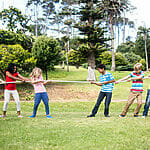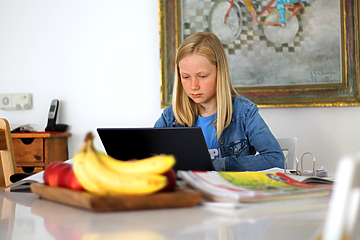As a parent, I understand the importance of providing my child with structured activities and educational opportunities. However, I have also come to realize that sometimes the best way to empower a child’s motivation is through play and exploration.
When given the freedom to explore, make mistakes, and creatively problem-solve, children can develop important life skills and foster a love of learning that will benefit them throughout their lives.
Research has shown that children thrive when they are allowed to engage in free play and exploration. By prioritizing these activities, we can help children develop their creativity, problem-solving skills, and social abilities.
In this article, I will explore the importance of preserving and empowering a child’s natural motivation through play and exploration. I will provide examples of successful projects such as the One Laptop Per Child Project, and share my own experiences with a tree fort building project to illustrate how we can help children reach their full potential by prioritizing play and exploration.
Key Takeaways
- Children benefit from curiosity, exploration, problem solving, and innovation.
- Direct instruction from adults impedes a child’s innate drive to creatively solve problems.
- Children’s natural motivation tends to diminish in adult-led activities.
- Children are naturally drawn to free play, pretending, making up games, daydreaming, wondering, and launching their own projects.
Learning and Development
I’ve learned that children thrive when they’re free to explore and learn through curiosity-driven activities. As adults, we sometimes feel the need to provide direct instruction and tell children what to do, but this can actually impede their natural drive to creatively solve problems.
Instead, we should encourage children to ask questions, make discoveries, and try new things on their own. Through this process of exploration, children develop important problem-solving skills that will serve them well throughout their lives.
Whether they’re building a tree fort, learning to read, or figuring out how to use a tablet PC, children need the freedom to make mistakes and learn from them. By supporting and nurturing their natural curiosity, we can empower children to take charge of their own learning and development, and help them grow into confident, independent problem-solvers.
The OLPC Project
The OLPC project is an innovative education initiative that provides children in Ethiopian villages with tablets pre-loaded with software. These devices empower children to collaborate, learn multiple languages and teach adults in their community how to use computers.
It’s inspiring to see how quickly and effectively the children have adapted to this technology, using it to connect, create and problem-solve. The project is a testament to the power of technology empowerment in education.
It’s exciting to see how these children are learning and growing, and how this knowledge can be shared with their families and their wider community. Through initiatives like this, we can help to unlock the potential of children around the world, giving them the tools they need to thrive and succeed in life.
How Can Play and Exploration Help in Teaching Geography in Homeschooling?
Play and exploration are essential easy homeschool geography teaching methods. By incorporating hands-on activities, such as building maps, using globes and atlases, or creating scavenger hunts, children can actively engage in their learning and develop a deeper understanding of different countries, cultures, and physical features. This interactive approach fosters curiosity and makes geography more enjoyable and memorable for homeschooling students.
Tree Fort Building
When I was building a tree fort with my friends, we had to scavenge for materials and ended up using pieces of wood we found on garbage pickup day. It was a challenging project, but we were motivated to create something that would be our own.
We spent an afternoon planning and measuring, hammering and sawing, and asking each other for advice. We made many mistakes along the way, but we learned from them and improved our building skills as we went.
What I remember most about building that tree fort was the teamwork dynamics. We all had different strengths and weaknesses, but we worked together to create something that we could all be proud of. We supported each other when we got frustrated and celebrated each other’s successes.
Even when we had to ask for help from adults, we never lost our sense of ownership over the project. Building that tree fort taught me that with a little bit of motivation and a lot of perseverance, anything is possible.













